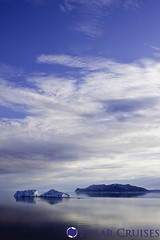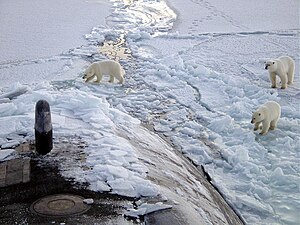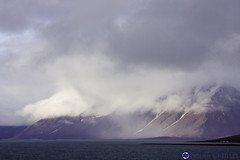 CAPE CANAVERAL, FL - MARCH 29: (L-R) Astronaunts, Greg Chamitoff, European Space Agency, Roberto Vittori, Andrew Feustel, Commander Mark Kelly, Pilot Gregory H. Johnson and Mission Specialists Michael Fincke, pose for a picture after arriving at the shuttle landing facility for the Terminal Countdown Demonstration Test at Kennedy Space Spacecraft Center, on March 29, 2011 in Cape Canaveral, Florida. The TCDT will culminate in a full dress rehearsal for the planned April 19th launch of Space Shuttle Endeavours final scheduled flight to the International Space Station before being retired. (Image credit: Getty Images via @daylife)
CAPE CANAVERAL, FL - MARCH 29: (L-R) Astronaunts, Greg Chamitoff, European Space Agency, Roberto Vittori, Andrew Feustel, Commander Mark Kelly, Pilot Gregory H. Johnson and Mission Specialists Michael Fincke, pose for a picture after arriving at the shuttle landing facility for the Terminal Countdown Demonstration Test at Kennedy Space Spacecraft Center, on March 29, 2011 in Cape Canaveral, Florida. The TCDT will culminate in a full dress rehearsal for the planned April 19th launch of Space Shuttle Endeavours final scheduled flight to the International Space Station before being retired. (Image credit: Getty Images via @daylife) English: Arctic annual mean(1982-2009) sea surface temperature and September/March ice edge(1995-2009 mean).Data source:http://www.esrl.noaa.gov/psd/data/gridded/data.noaa.oisst.v2.html (Photo credit: Wikipedia)
English: Arctic annual mean(1982-2009) sea surface temperature and September/March ice edge(1995-2009 mean).Data source:http://www.esrl.noaa.gov/psd/data/gridded/data.noaa.oisst.v2.html (Photo credit: Wikipedia) Arctic Ice Bergs (Photo credit: Polar Cruises)
Arctic Ice Bergs (Photo credit: Polar Cruises) Arctic Ocean seaports. (Photo credit: Wikipedia)
Arctic Ocean seaports. (Photo credit: Wikipedia) Arctic Sea ice concentration, biweekly northern hemispheric chart - In 2007 the Arctic Sea ice melted early, and rapidly fell to record low levels. (Photo credit: Wikipedia)
Arctic Sea ice concentration, biweekly northern hemispheric chart - In 2007 the Arctic Sea ice melted early, and rapidly fell to record low levels. (Photo credit: Wikipedia) Three Polar bears approach the USS Honolulu, 280 miles from the North Pole. (Photo credit: Wikipedia)
Three Polar bears approach the USS Honolulu, 280 miles from the North Pole. (Photo credit: Wikipedia) NOAA Projected Arctic changes. (Photo credit: Wikipedia)
NOAA Projected Arctic changes. (Photo credit: Wikipedia) This image shows the Arctic as observed by the Advanced Microwave Scanning Radiometer for EOS (AMSR-E) aboard NASA’s Aqua satellite on September 16, 2007. The image shows a record sea ice minimum in the Arctic. (Photo credit: Wikipedia)
This image shows the Arctic as observed by the Advanced Microwave Scanning Radiometer for EOS (AMSR-E) aboard NASA’s Aqua satellite on September 16, 2007. The image shows a record sea ice minimum in the Arctic. (Photo credit: Wikipedia) Arctic Landscape (Photo credit: Polar Cruises)
Arctic Landscape (Photo credit: Polar Cruises)Extinction rate of North American freshwater fish could double by 2050
Haze from Indonesian fires causing health threat in Thailand
Arctic ice melting faster than anticipated
Information taken from the CryoSat-2 probe suggests that Arctic ice is thinning 50% faster than scientists had originally predicted.
ESA's data, which was compared with NASA and submarine records, found that 900 cubic kilometres of summer ice has vanished from the Arctic ocean in the past twelve months.
The Facts on Silver
Dartmouth Toxic Metals - news
C-MERC Papers Published in EHP
The June issue of Environmental Health Perspectives (EHP), includes two Coastal and Marine Mercury Ecosystem Research Collaborative (C-MERC), papers synthesizing research on mercury effects and exposure from fish consumption: Karagas et al. examines the emerging research on health effects of low level exposures to methylmercury,Oken et al. looks at the complexities of providing clear, unified fish consumption advice to reduce methylmercury exposure while simultaneously balancing nutrient intake, ecologic concerns, and economic issues. The issue also includes Celia Chen's editorial,Methylmercury Effects and Exposures: Who Is at Risk?
Superfund Researchers Publish Arsenic Paper in PLoS One
Dartmouth researchers, Joshua Hamilton of the Marine Biological Laboratory and Courtney Kozul-Horvath at Geisel School of Medicine at Dartmouth, have published a paper entitled "Effects of low-dose drinking water arsenic on mouse fetal and postnatal growth and development" linking exposure to arsenic in drinking water to adverse health outcomes in pregnant and lactating mice and their offspring.
Superfund Researcher, Brian Jackson, was part of a Panel of Scientists at a Science Cafe Discussing Arsenic in Food and Water in Concord, NH
FAQ Responses Regarding Arsenic in Food Containing Organic Brown Rice Syrup
Dartmouth Researchers Publish Paper on Arsenic in Organic Brown Rice SyrupRead more...
Superfund Research Programhttp://www.niehs.nih.gov/research/supported/srp/news/index.cfm
Exposure to triclosan linked to impairment of heart and muscle activity
UC Davis Bioassay Adopted for EPA Screening Program
“Development and Applications of Integrated In Vitro and Cell-Based Bioassays,” aims to develop and validate mechanistically-based cell and in vitro bioassays to screen for specific chemicals or chemical classes in environmental and biological samples.
SRP Grantees gather, meet with ATSDR representatives
More than 100 Superfund Research Program grantees and Agency for Toxic Substances and Disease Research (ATSDR) scientists gathered on August 7-8 at the ATSDR campus in Atlanta, Ga. to investigate points of shared research interest and possibilities for collaboration.
The meeting was broken into four topic areas: legacy contaminants, community engagement, fate and transport of chemicals, and emerging contaminants.
A full meeting report will be available in the September edition of the NIEHS Environmental Factor.
Windows of Lead Exposure Sensitivity, Attained Height, and Body Mass Index at 48 Months. Journal of Pediatrics.  160:1044-1049. doi:10.1016/j.jpeds.2011.12.022
160:1044-1049. doi:10.1016/j.jpeds.2011.12.022 
Prioritization of Biomarker Targets in Human Umbilical Cord Blood: Identification of Proteins in Infant Blood Serving as Validated Biomarkers in Adults.Environmental Health Perspectives. 120:764-769. doi:10.1289/ehp.1104190 
Arsenic concentration and speciation in infant formulas and first foods. Pure and Applied Chemistry.  84(2):215-223. doi:10.1351/PAC-CON-11-09-17
84(2):215-223. doi:10.1351/PAC-CON-11-09-17 
Arsenic, Organic Foods, and Brown Rice Syrup. Environmental Health Perspectives. 120:623-626. doi:10.1289/ehp.1104619 
Arsenic exposure from drinking water and dyspnoea risk in Araihazar, Bangladesh: a population-based study. European Respiratory Journal.39:1076-1083. doi:10.1183/09031936.00042611 
Reader Supported News shared a link.
Reader Supported News shared a link.
Indoor and outdoor air pollution and lung cancer in New Hampshire and Vermont.Toxicology and Environmental Chemistry. 94:605-615.doi:10.1080/02772248.2012.659930 


















.jpg)















No comments:
Post a Comment